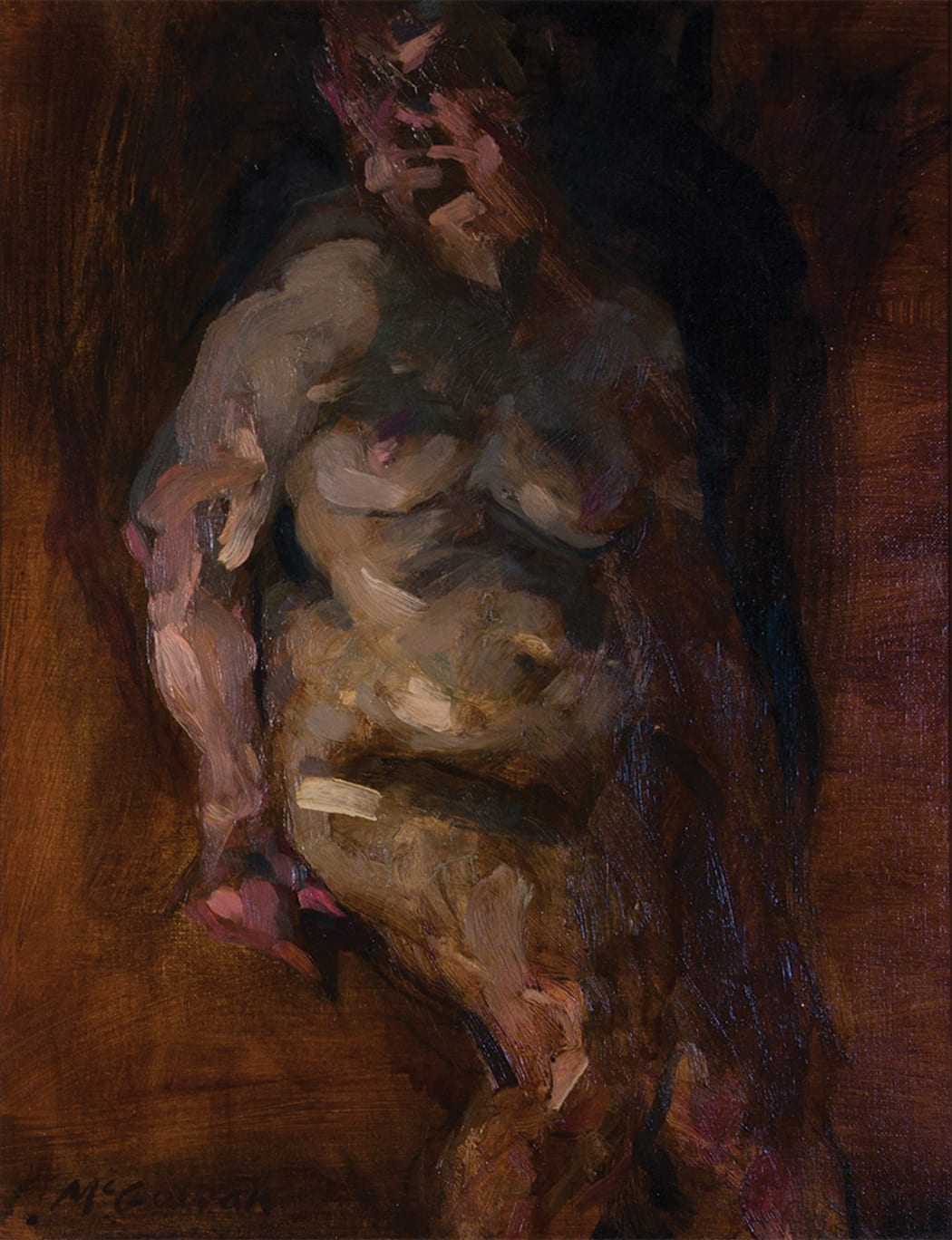
Your paintings have always fascinated me. Both for the free yet precise way you capture the human body - and for the psychological depth of your paintings. What comes first: mind or muscle?
They are interwoven with each other - the figure has muscle but that can only be apprehended by me through mind, through my perception and understanding; and the subject has mind but that is only realised in the painting through my muscle, the physical movement of the hand through paint or whatever materials I’m working with. So mind and body are embedded in each other, somehow realised through each other.
You have recently been producing bronzes sculpture (with great success.) How have you found moving into the three-dimensional world?
It has seemed like a natural progression. The first sculpted head that I produced a couple of years ago won the Powderhall Bronze Foundry award at the RSA and was selected for the Threadneedle exhibition of figurative art in London, which was a bit of a surprise. It feels like an extension of what I had already been doing in paint but with different challenges and possibilities. I’m interested in mobility and the movement of the sculptural image in space as it turns and one looks at it from different angles is really exciting to me.
The cannon of artists who tackled the human figure goes back a long way and includes some of the greatest artists of all time. Who of these provide the greatest inspiration?
The list is endless, but the main ones would be Rodin, Michelangelo, Egon Schielle, Giacometti, Francis Bacon, Rubens, Rembrandt. Then others like Raphael (drawings), Leonardo da Vinci (anatomy), Bernini, Eugene Carriere, Lucien Freud, Jenny Saville, George Bellows, Gwen John. I am inspired by artists whose figures convey something of what they feel about the world, a kind of emotional charge, and it’s fascinating to me how that can be expressed by a body and again somehow embodied in paint or clay or bronze.
